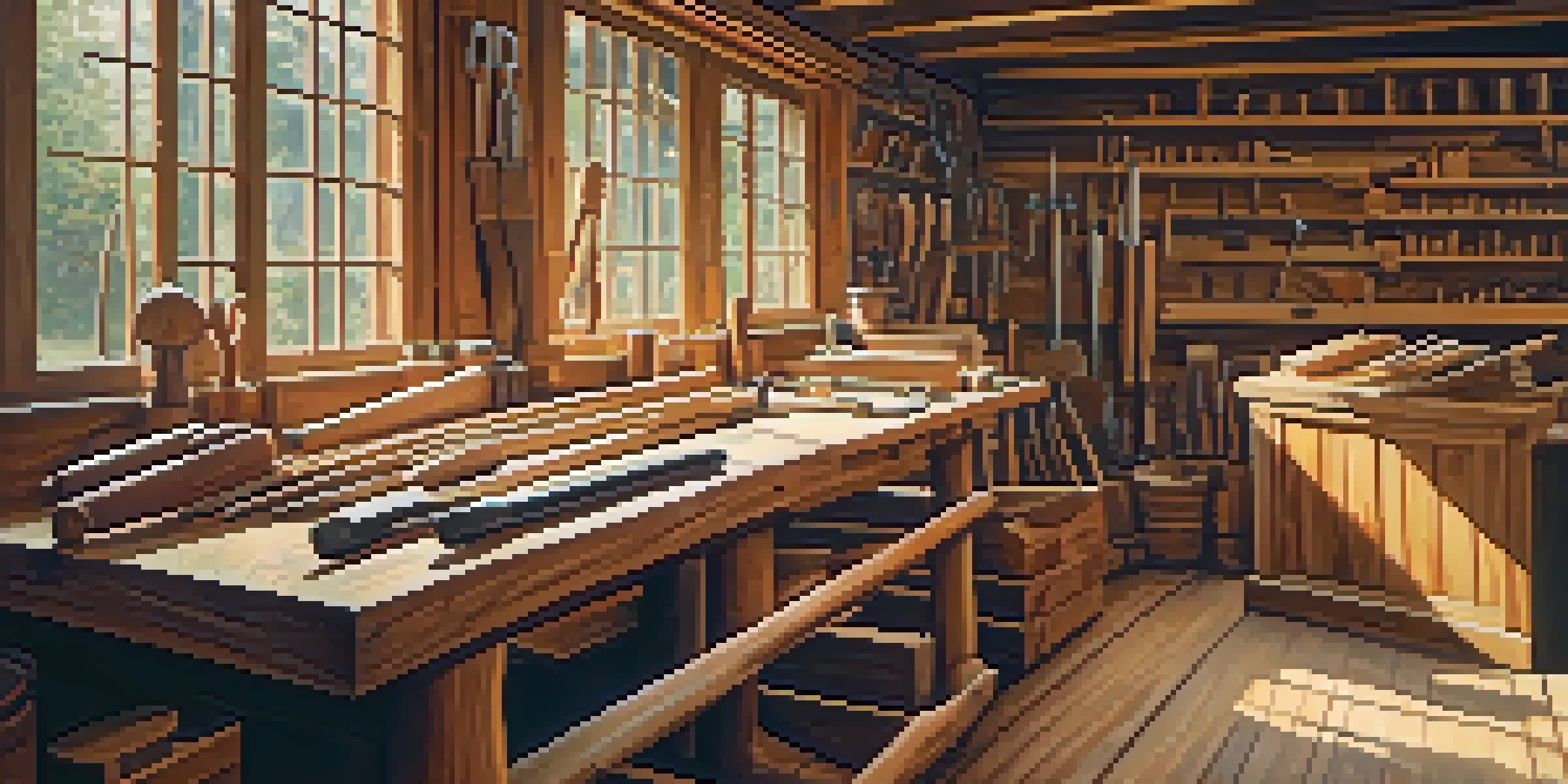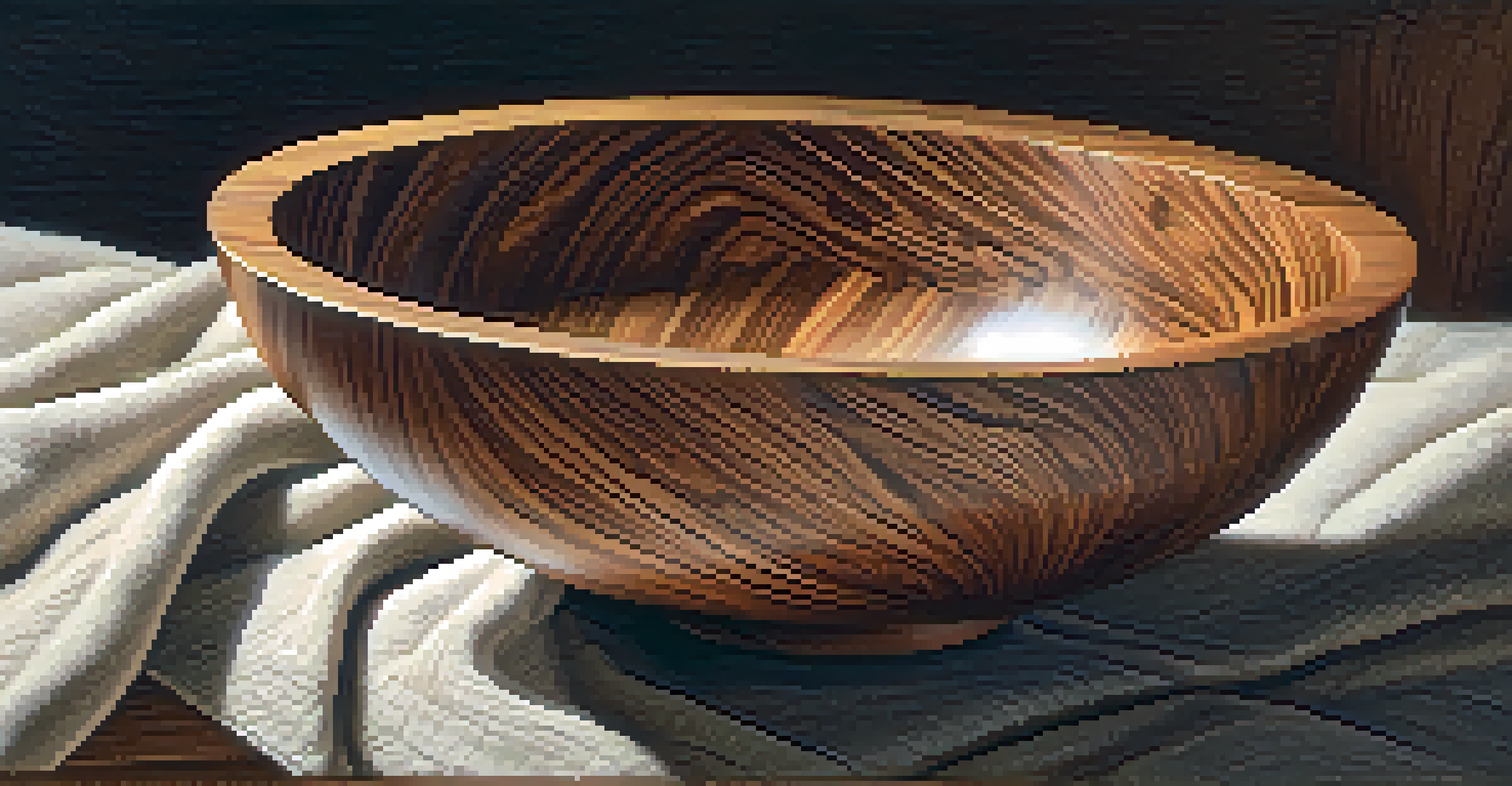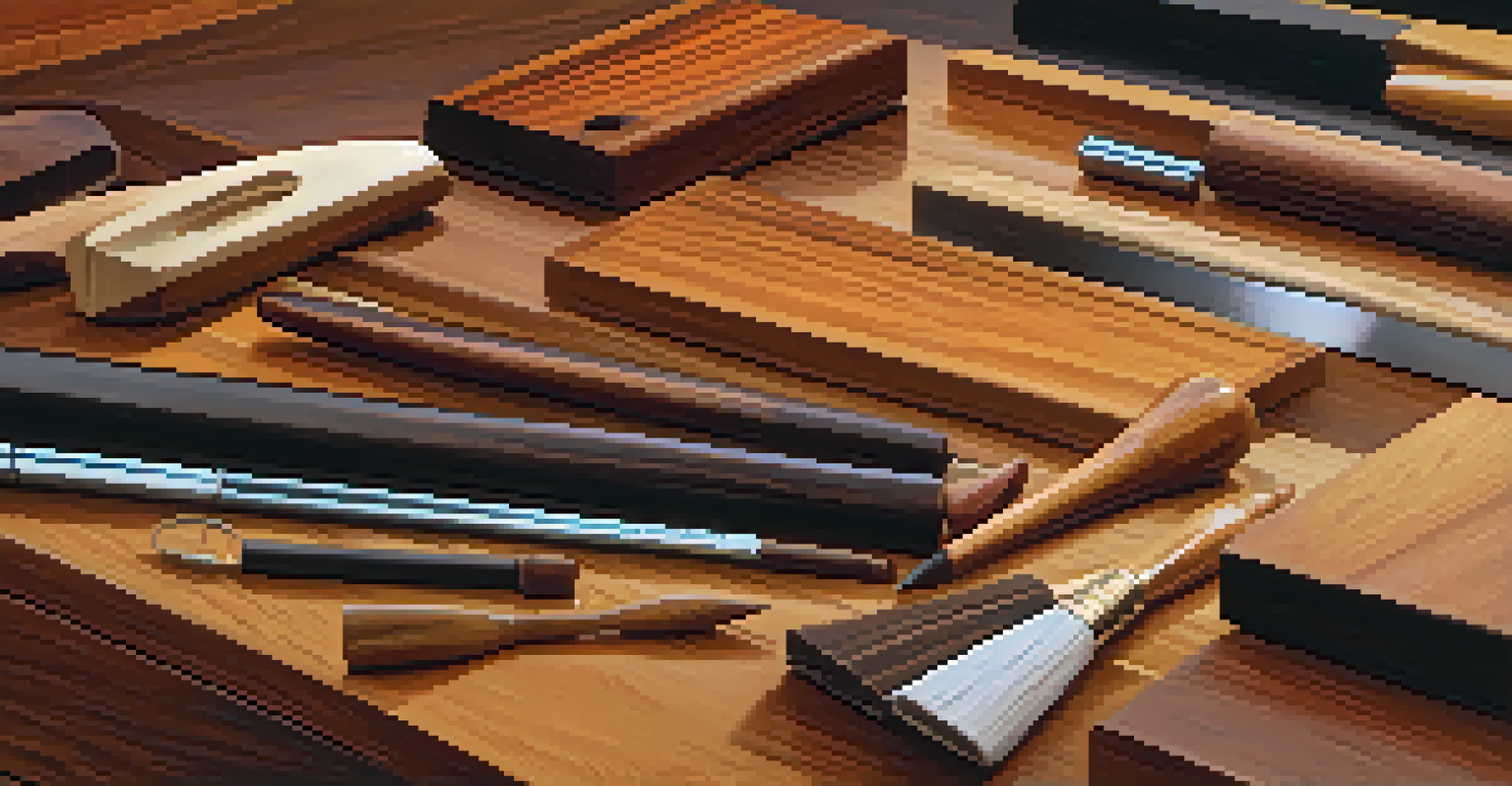Exploring Wood Types: Best Choices for Carving Projects

Understanding the Basics of Wood Types for Carving
When it comes to wood carving, not all wood is created equal. Different types of wood have unique properties that can affect your carving experience and the final product. Understanding these basics will help you make informed decisions for your projects.
Wood is the most versatile material available to man. It can be carved, shaped, and transformed into virtually anything.
Some woods are softer and easier to carve, while others are denser and can withstand intricate details. Each type of wood also has its own grain pattern, which can add character to your work. Knowing what to look for can elevate your craftsmanship.
In this article, we'll explore various wood types, their advantages, and the best uses for each. Whether you're a beginner or an experienced carver, you’ll find valuable insights to guide your next project.
Softwoods: Ideal Choices for Beginners
Softwoods, such as pine and cedar, are typically more forgiving for beginners. Their lower density means they are easier to carve and shape, which can be a real confidence booster when starting out. Plus, they often come at a lower cost, making them accessible for new carvers.

Pine, for example, is a favorite among novice woodworkers because it's lightweight and readily available. It can be easily sanded and painted, allowing for versatile finishing options. Cedar, on the other hand, not only carves well but also has a pleasant aroma, making the experience even more enjoyable.
Wood Types Impact Carving Success
Different wood types, from softwoods to hardwoods, each offer unique properties and challenges that can enhance or hinder your carving experience.
Using softwoods gives beginners the chance to practice techniques without the frustration that harder woods can bring. Once you feel more comfortable, you can gradually transition to more challenging materials.
Hardwoods: A Step Up for Experienced Carvers
Hardwoods like oak, walnut, and cherry are often sought after by seasoned carvers. They offer a sturdier structure and can hold intricate details beautifully, making them perfect for detailed projects. However, this also means they require a bit more effort to carve.
The best time to plant a tree was 20 years ago. The second best time is now.
For instance, oak is known for its durability and impressive grain patterns that can really make your carving pop. Walnut, with its rich color and fine grain, is often favored for decorative pieces and furniture accents. Cherry wood, on the other hand, darkens beautifully over time, adding a unique touch to your creations.
While working with hardwoods can be more challenging, the results are often stunning. They allow for a level of artistry that can take your skills to new heights, so don’t hesitate to dive in if you’re ready for the challenge.
Exotic Woods: Unique Options for Distinctive Projects
If you're looking to make a statement with your carving, exotic woods might just be the way to go. Woods like mahogany, teak, and rosewood are known for their stunning aesthetics and unique properties. They can transform an ordinary piece into something extraordinary.
Mahogany, for instance, is celebrated for its rich, reddish-brown color and smooth finish. It's often used for high-end furniture and intricate carvings. Teak, famous for its water resistance, is a great choice for outdoor carvings, while rosewood has a beautiful grain that makes it a favorite for musical instruments.
Sustainability Matters in Wood Choices
Choosing sustainably sourced wood not only supports the environment but also enriches your projects with ethical considerations.
While exotic woods can be more expensive and sometimes harder to source, they are worth the investment for special projects. Their beauty and durability can add a touch of luxury to your work that is hard to replicate with more common woods.
Grain Patterns: Influencing Your Carving Decisions
Grain patterns in wood can significantly impact both the appearance and carving process. Straight grains are typically easier to work with, as they provide consistent resistance and predictable results. However, woods with interesting grain patterns can add a unique flair to your projects.
For example, woods like birch and maple often have lovely, subtle patterns that can enhance the visual appeal of your carvings. On the other hand, woods with irregular grains, such as oak, can pose challenges but also offer opportunities for creativity and expression.
When choosing wood for a project, consider how the grain will interact with your design. This attention to detail can elevate your work from ordinary to extraordinary, showcasing the natural beauty of the wood.
Sustainability: Choosing Eco-Friendly Wood Options
As we carve out our creative paths, it's essential to consider the impact of our wood choices on the environment. Sustainable wood sourcing means selecting materials that are harvested responsibly, ensuring that forests remain healthy and vibrant. This not only benefits the planet but also supports ethical practices in the woodworking community.
Look for certifications like the Forest Stewardship Council (FSC) label, which indicates that the wood comes from responsibly managed forests. Additionally, consider using reclaimed wood, which not only reduces waste but often comes with a unique history and character.
Finishing Techniques Enhance Beauty
Employing the right finishing techniques can significantly elevate the appearance and longevity of your carved wood creations.
By prioritizing sustainability in your projects, you can create beautiful art while also being a steward of the environment. This thoughtful approach can add depth to your work, resonating with eco-conscious consumers and fellow artisans alike.
Finishing Techniques: Enhancing Your Carved Wood
Once you've selected your wood and completed your carving, it's time to think about finishing techniques. A well-executed finish can protect your work and bring out the wood's natural beauty. Different finishes, such as oils, stains, and sealants, can dramatically change the look and feel of your project.
For instance, applying a clear oil finish can enhance the grain and color of the wood, giving it a warm, rich glow. Alternatively, using a stain can change the wood's appearance entirely, allowing you to match it with existing décor or personal preferences. Sealants, on the other hand, provide a protective barrier to ensure your work withstands the test of time.

Taking the time to properly finish your carved pieces can elevate your craftsmanship and make your projects truly shine. It’s the final touch that showcases your hard work and dedication to quality.